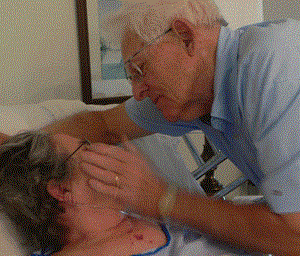It is guaranteed that as an oncology nurse each one of us has encountered a patient at the end of his or her life. Despite the medical advances in cancer prevention and screening, sometimes there are no more ways to fight the disease. At that point, there is a sort of paradigm shift, and the entire focus leaves cure of disease and moves to symptom management and comfort of the patient. For anyone who has been present when the patient, family, and medical team have had this shift in mentality, I think you will agree with me that it is a beautiful moment.
So often I want patients to have this change of focus earlier in their treatment course. But, it is not my role as a nurse to convince them of this. They need to arrive at that conclusion on their own, bolstered by the reality of their health status and accurate communication by the medical team.
It has been almost 20 years since the landmark study: A Controlled Trial to Improve Care for Seriously Ill Hospitalized Patients: The Study to Understand Prognoses and Preferences for Outcomes and Risks of Trearments (SUPPORT), that identified major flaws in decision making near end of life. Since then, palliative care has become a board-certified specialty and a hot topic in health care. But have we made any strides to improve communication of patients' wishes at end of life? I recently read a follow up to the SUPPORT study by Dr. Muriel R. Gillick in the Journal of Palliative Medicine that outlined five problems that remain today.
Communication remains a major barrier to appropriate and timely end-of-life discussions. As people are living longer with chronic comorbidities, it is even more important to provide education to patients and families on their specific diseases and their overall health.
Practitioners offer too many choices at the end of life, thinking that patient autonomy is the key. Gillick argues that we should instead be ascertaining their goals of care and help them make decisions based on those goals. I think this often requires a lengthy conversation—maybe even several lengthy conversations—that we often don't think we have time for. Then, we wonder why the patient and family are fighting to have everything possible.
Recognizing the importance of symbolism is another issue of end-of-life care. Things like CPR, ventilatory support, and artificial nutrition can be symbolic of making an effort or trying everything possible. Signing a DNR or consenting to hospice care can be viewed as giving up the fight. How many times has a family told you "he's a fighter?" Of course the patient has fought hard through his or her respctive disease trajectory, but he is not immune to death, right? It is our role as nurses to educate patients and families on what interventions actually do to the body at the end of life.
Cultural considerations often pose a dilemma for healthcare providers. Gillick points out that some cultures believe in withholding information from the dying person, and we could be providing a disservice to patients and families if we allow misinformation to determine treatment. Again, he encourages providers to explore the patient's and family's goals and then discuss how best to achieve those goals.
Often, patients undergo a lengthy ICU stay, and then the family is abruptly told that treatment is futile and that nothing else can be done—enter: palliative care. By consulting palliative care or having regular conversations with the ICU team on the patient's progress, the pace can be slowed down, and confused emotions can be avoided.
Gillick makes some good points, and one thread runs consistently throughout each suggestion—take the time to understand where the patient and family is coming from, find out their goals, and have frequent and honest conversations along the way. It sounds so simple, yet it requires time, sensitivity, and patience. Just as cancer treatment is moving toward personalized medicine, so should end-of-life care. We must tailor care to the individually identified goals of the patient and family.






